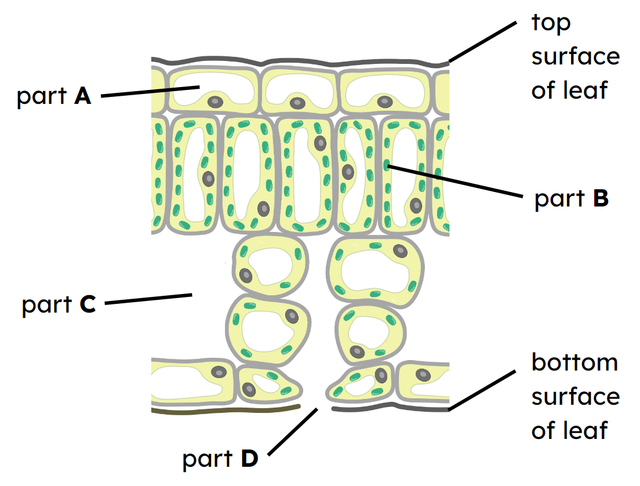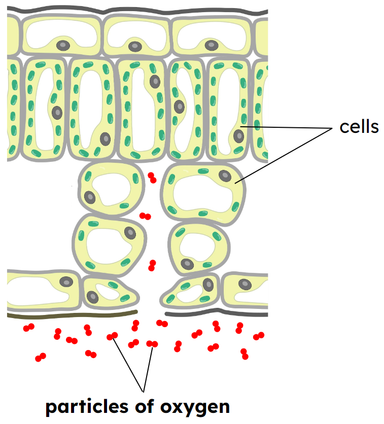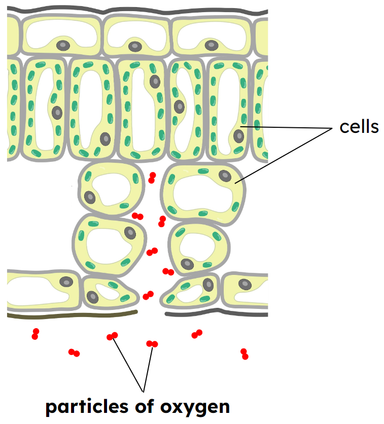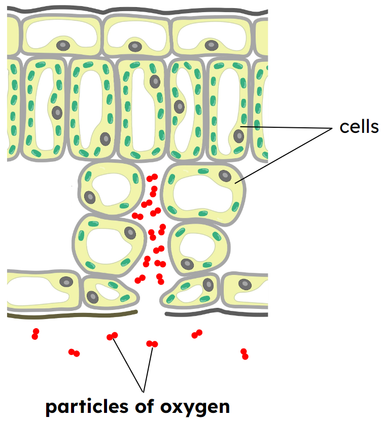Myths about teaching can hold you back
- Year 9
Adaptations of plants for photosynthesis: gas exchange and stomata
You can describe how plants are adapted to take in and release gases to support photosynthesis.
- Year 9
Adaptations of plants for photosynthesis: gas exchange and stomata
You can describe how plants are adapted to take in and release gases to support photosynthesis.
These resources will be removed by end of Summer Term 2025.
Switch to our new teaching resources now - designed by teachers and leading subject experts, and tested in classrooms.
These resources were created for remote use during the pandemic and are not designed for classroom teaching.
Lesson details
Key learning points
- Plant leaves take in carbon dioxide gas from the air for photosynthesis
- The oxygen made by photosynthesis is released as a gas from leaves into the air
- This process is called gas exchange
- Leaves have small holes in their surface called stomata for gas exchange
- Molecules of gases move through open stomata by diffusion
Keywords
Gas exchange - Gas exchange in plants is when photosynthesising leaves take in carbon dioxide gas and release waste oxygen gas.
Stomata - Small holes in the surfaces of a leaf.
Guard cells - Cells next to stomata that can change shape to open and close the stomata.
Diffusion - Diffusion is caused by the continuous random movement of molecules of a gas (or of a liquid).
Net movement - When more molecules of a gas (or of a liquid) diffuse from an area of higher concentration to an area of lower concentration.
To help you plan your year 9 science lesson on: Adaptations of plants for photosynthesis: gas exchange and stomata, download all teaching resources for free and adapt to suit your pupils' needs...
To help you plan your year 9 science lesson on: Adaptations of plants for photosynthesis: gas exchange and stomata, download all teaching resources for free and adapt to suit your pupils' needs.
The starter quiz will activate and check your pupils' prior knowledge, with versions available both with and without answers in PDF format.
We use learning cycles to break down learning into key concepts or ideas linked to the learning outcome. Each learning cycle features explanations with checks for understanding and practice tasks with feedback. All of this is found in our slide decks, ready for you to download and edit. The practice tasks are also available as printable worksheets and some lessons have additional materials with extra material you might need for teaching the lesson.
The assessment exit quiz will test your pupils' understanding of the key learning points.
Our video is a tool for planning, showing how other teachers might teach the lesson, offering helpful tips, modelled explanations and inspiration for your own delivery in the classroom. Plus, you can set it as homework or revision for pupils and keep their learning on track by sharing an online pupil version of this lesson.
Explore more key stage 3 science lessons from the Plant nutrition and photosynthesis unit, dive into the full secondary science curriculum, or learn more about lesson planning.

Equipment
Licence
Prior knowledge starter quiz
6 Questions
Q1.Which part of a plant takes in gas for photosynthesis and releases gas made by photosynthesis?
Q2.What is the name of the gas that plants take in for photosynthesis?
Q3.What is the name of the gas that plants make as a waste product from photosynthesis?
Q4.Carbon dioxide gas and oxygen gas are made up of _____ .
Q5.When particles of a gas move from one place to another, this is called _____ .
Q6.The diagram shows particles of a gas. Which statement is correct?

Assessment exit quiz
6 Questions
Q1.What is the name of the tiny holes in the surface of a leaf?
Q2.The diagram shows some structures that make up a plant’s leaf. Which part of the diagram shows one of the leaf’s stomata?

Q3. cells can change shape to open and close stomata.
Q4.Which process allows gas exchange through open stomata during photosynthesis?
Q5.Which diagram shows the correct concentration gradient of particles of oxygen gas when the cells inside the leaf are photosynthesising?





